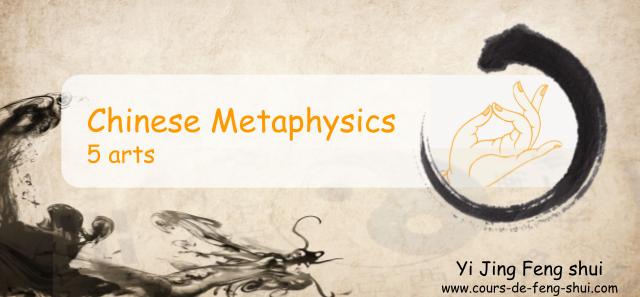
From Chinese medicine to divination, a wide variety of disciplines are linked to Chinese metaphysics. The 5 arts represent a cornerstone of traditional Chinese culture, having been classified over 2000 years ago during the Qin and Han dynasties. This period, much like our Age of Enlightenment, was a time when metaphysical theories were meticulously listed, compiled, classified, and passed down through the centuries to the present day. However, these theories are much older, tracing their roots back to antiquity.
Chinese metaphysics is thus divided into five main subjects of study, known as the five arts: Mountain (also known as the alchemy of the immortals), Medicine, Destiny, Appearance, and Divination.

The Art of the Mountain – the alchemy of the immortals
The Mountain Art is so named because ancient sages and shamans, often referred to as immortals, lived in remote mountains, sustained by rare plants and elixirs. This art represents an alchemical path for Taoists, who practiced various disciplines to explore aspects of the human body and mind.
Initially, there was external alchemy, which aimed to produce an immortality pill or elixir of long life using cinnabar. This later evolved into internal alchemy, combining body and mind practices. This art also encompasses the philosophical teachings of Lao Zi and Zhuang Zi, along with dietetics, plant decoctions, fasting, meditation, and both internal and external martial arts. Talismans were also used to protect the body and mind.
Today, the Art of the Mountain is reflected in the study of the Yi Jing, Taoist texts, meditation for Shen, Qi, and Jing, Taoist exercises like DaoYin, QiGong, TaiJiQuan, BaDuanJin, and BaGuaZhang, as well as traditional Chinese martial arts (WuShu) and Chinese dietetics based on Yin Yang and the Five Elements

The art of Medicine
This art is focused on maintaining health and curing illnesses, covering the study of medicinal plants and herbs, Qi circulation, and the meridians. It includes all forms of traditional Chinese medicine (TCM), such as pharmacopoeia, acupuncture, moxibustion, and soul healing techniques that use spiritual energy to remove blockages causing illness.
Today, this art continues in the practices of traditional Chinese medicine, acupuncture, herbal medicine, moxibustion, massage therapies like TuiNa, and techniques like GuaSha.

The art of Destiny
The Art of Destiny revolves around reading destiny and luck through astrology. In Chinese astrology, Destiny refers to the fixed energies determined at birth, while Luck represents the cyclical influences that occur over time.
Modern practices of this art include:
- Zi Wei Dou Shu (Emperor’s Astrology): This system analyzes 12 palaces in which 28 to over 100 stars are distributed, offering a detailed reading of an individual’s life.
- The Four Pillars of Destiny (BaZi): This system uses the hour, day, month, and year of birth to analyze Destiny. The evolution of these elements over time gives insight into one’s Luck.

The art of Appearance
This art focuses on the study of appearance or physiognomy, which involves analyzing favorable and unfavorable aspects of forms, including the appearance of a person, their environment, and even the choice of Chinese characters in a name.
The Art of Appearance includes:
- Feng Shui (Yang and Yin): Yang Feng Shui involves reading the environment for the living, combining shapes and formulas to study land formations and Qi flow. Yin Feng Shui, on the other hand, is concerned with the auspicious placement of tombs, as ancestor worship is crucial in Chinese culture. The proper location of a grave is believed to bring luck and prosperity to descendants.
- Face Reading: This practice deciphers a person’s character and destiny based on their facial features.
- Palm Reading: Interpreting the lines and features of the palm to understand one’s future.

The art of Divination
The Art of Divination is the practice of strategy and decision-making through predicting, analyzing situations, and making informed decisions. This ancient art in China originally involved writing questions on bones or turtle shells, which were then heated. The resulting cracks were interpreted by the emperor’s diviners.
Today, the art of divination is practiced through methods such as:
- The Three Styles: Originally used for military strategy, these include Da Liu Ren (predicting daily life events), Tai Yi Shen Shu (forecasting large-scale events), and Qi Men Dun Jia (strategically determining the best time and place for actions).
- King Wen’s Method: Using the 64 hexagrams of the Yi Jing for precise situational analysis and decision-making.